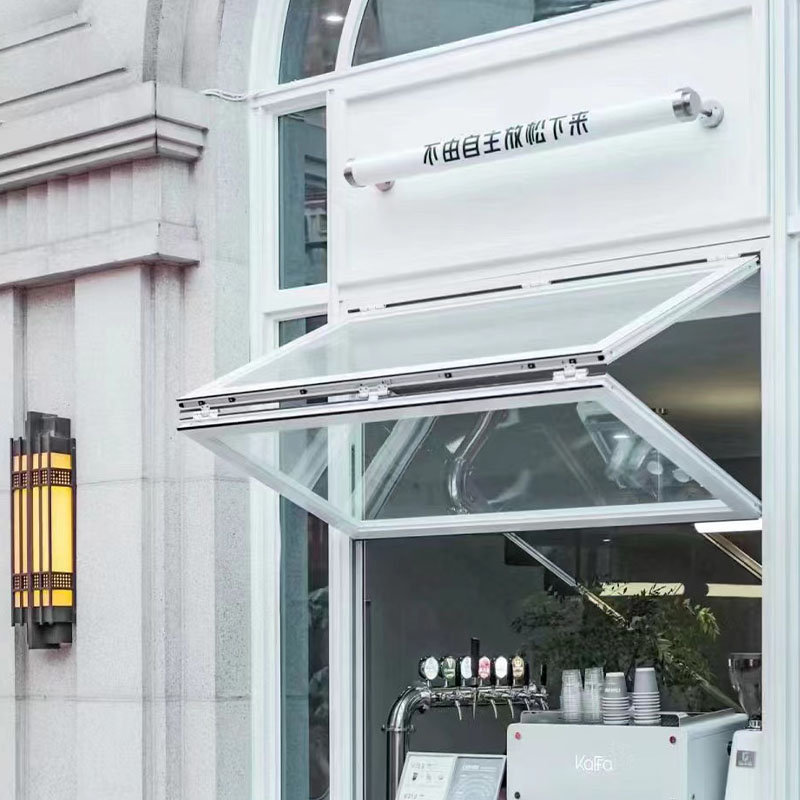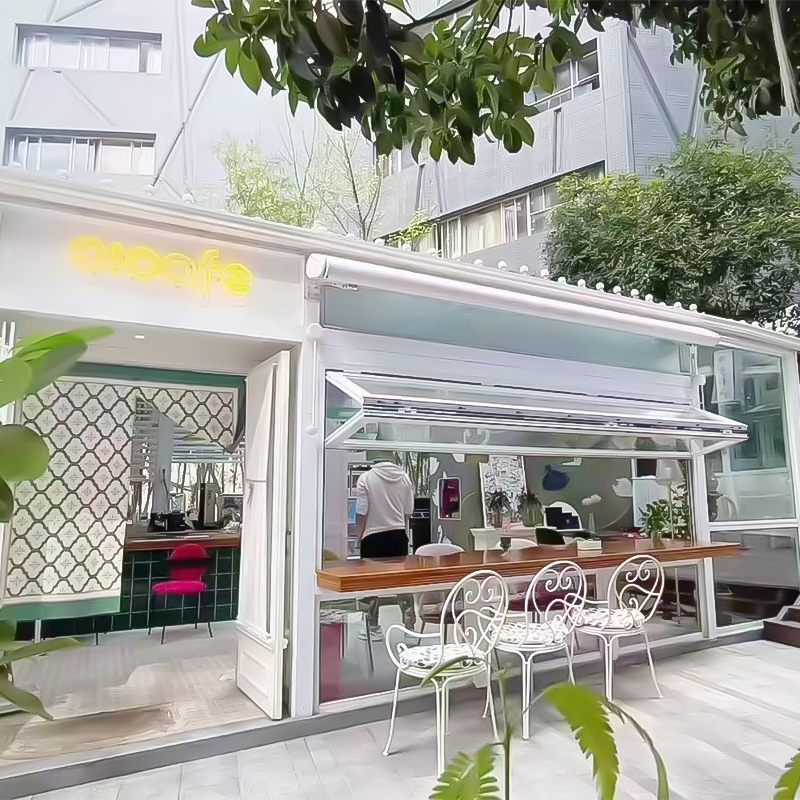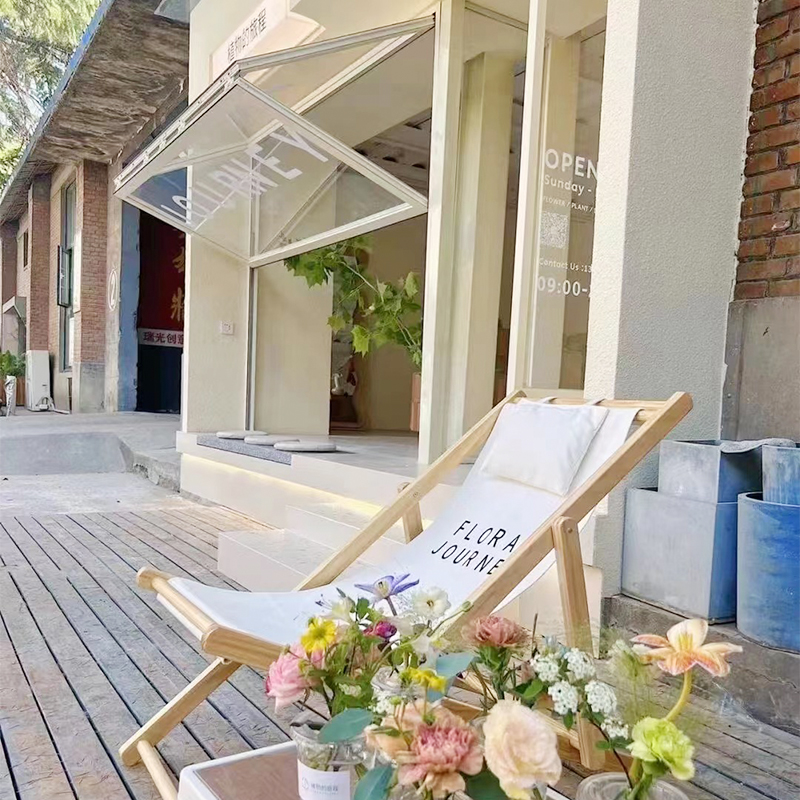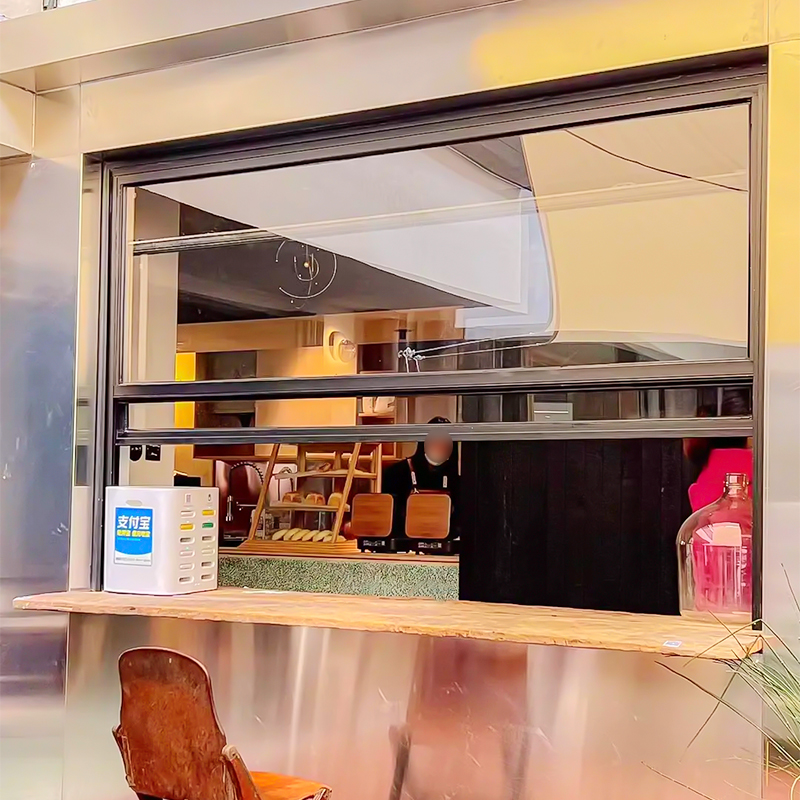How can a manual lifting window achieve stable hovering at any height?
Release Time : 2025-07-03
In modern architecture and commercial space design, the function of windows has long been more than ventilation and lighting. Especially in scenes such as canteen delivery ports, delicatessens, kitchens, and bathrooms, higher requirements are placed on the convenience of operation, space utilization, and functionality of windows. Manual lifting windows have become an ideal choice for these places due to their characteristics of "free hovering, no bottom space, and easy lifting and lowering". One of the core technical highlights is that it can achieve stable hovering at any height.
1. Structural design is the core of achieving stable hovering
The reason why manual lifting windows can achieve hovering at any height mainly depends on their special mechanical transmission structure. Usually, this type of window uses a counterweight system or a friction locking device, which enables the window sash to maintain balance during the rising or falling process through the cooperation between the slide rail, wire rope (or chain) and pulley assembly.
Taking the common spring counterweight system as an example, the elastic force of the spring can offset the weight of the window sash itself. When the user releases the operating handle, the window sash will not suddenly fall due to gravity, but stay at the position where the user releases it. This design not only achieves a stable hovering effect, but also greatly reduces the force required for operation, making it easy to lift and lower even heavier glass windows.
In addition, some high-end manual lifting windows also use a gear rack + clutch structure. Users only need to gently rotate the handle to control the window position, and stop when they let go, further improving the comfort and safety of use.
2. Materials and manufacturing processes guarantee long-term stability
In addition to structural design, the material selection and manufacturing process of manual lifting windows also directly affect the stability and service life of their hovering performance. For example, the slide rails are mostly made of high-strength aluminum alloy or stainless steel, which has good wear resistance and deformation resistance; the pulleys are often made of nylon or polyurethane materials to ensure smooth operation while reducing noise.
At the same time, in order to prevent loosening or imbalance after long-term use, many products also add anti-loosening screws, self-lubricating bearings and other detailed designs to key connection parts, so as to ensure that even after tens of thousands of lifting operations, the window can still stay at any height accurately without sliding or shaking.
3. Flexible adaptation to a variety of application scenarios
This feature of manual lifting window enables it to be widely used in many fields:
Canteen delivery port: waiters can adjust the window height according to the height of customers, which is convenient for picking up food and preventing food from spilling.
Deli window: The opening height can be freely adjusted according to the business status, which can not only display goods, but also effectively prevent dust and theft.
Bathroom/kitchen window: There is no need to worry about the window occupying the space below after opening, which is suitable for installation above the sink and stove.
Villa doors and windows: It can be used for the design of large-area floor-to-ceiling windows or balcony doors, which is both beautiful and practical, and improves the overall living quality.
In these scenarios, the "arbitrary hovering" function of manual lifting window not only improves the convenience of operation, but also optimizes the efficiency of space utilization and meets diverse needs.
4. Advantages at the user experience level
For ordinary users, the biggest benefit of "arbitrary hovering" is high freedom of operation and more humanized use. Compared with traditional casement windows or sliding windows, manual lifting windows do not need to be fully opened or closed. Users can precisely control the ventilation area according to actual needs, especially when the weather is slightly cool or there is a slight wind, only a small part needs to be opened to achieve the ideal ventilation effect.
At the same time, since there is no "full open or full closed" restriction of traditional window sashes, manual lifting windows are more visually simple and beautiful, and are more suitable for integration with modern home styles. In particular, some products with hidden track designs hardly destroy the overall beauty of the wall, further improving the decoration level.
In summary, the reason why manual lifting windows can achieve stable hovering at any height is due to its precise mechanical structure design, high-quality material selection and humanized use experience. It not only solves the limitations of traditional windows in space utilization and operation, but also provides more flexible and efficient solutions for various commercial and residential scenarios.
1. Structural design is the core of achieving stable hovering
The reason why manual lifting windows can achieve hovering at any height mainly depends on their special mechanical transmission structure. Usually, this type of window uses a counterweight system or a friction locking device, which enables the window sash to maintain balance during the rising or falling process through the cooperation between the slide rail, wire rope (or chain) and pulley assembly.
Taking the common spring counterweight system as an example, the elastic force of the spring can offset the weight of the window sash itself. When the user releases the operating handle, the window sash will not suddenly fall due to gravity, but stay at the position where the user releases it. This design not only achieves a stable hovering effect, but also greatly reduces the force required for operation, making it easy to lift and lower even heavier glass windows.
In addition, some high-end manual lifting windows also use a gear rack + clutch structure. Users only need to gently rotate the handle to control the window position, and stop when they let go, further improving the comfort and safety of use.
2. Materials and manufacturing processes guarantee long-term stability
In addition to structural design, the material selection and manufacturing process of manual lifting windows also directly affect the stability and service life of their hovering performance. For example, the slide rails are mostly made of high-strength aluminum alloy or stainless steel, which has good wear resistance and deformation resistance; the pulleys are often made of nylon or polyurethane materials to ensure smooth operation while reducing noise.
At the same time, in order to prevent loosening or imbalance after long-term use, many products also add anti-loosening screws, self-lubricating bearings and other detailed designs to key connection parts, so as to ensure that even after tens of thousands of lifting operations, the window can still stay at any height accurately without sliding or shaking.
3. Flexible adaptation to a variety of application scenarios
This feature of manual lifting window enables it to be widely used in many fields:
Canteen delivery port: waiters can adjust the window height according to the height of customers, which is convenient for picking up food and preventing food from spilling.
Deli window: The opening height can be freely adjusted according to the business status, which can not only display goods, but also effectively prevent dust and theft.
Bathroom/kitchen window: There is no need to worry about the window occupying the space below after opening, which is suitable for installation above the sink and stove.
Villa doors and windows: It can be used for the design of large-area floor-to-ceiling windows or balcony doors, which is both beautiful and practical, and improves the overall living quality.
In these scenarios, the "arbitrary hovering" function of manual lifting window not only improves the convenience of operation, but also optimizes the efficiency of space utilization and meets diverse needs.
4. Advantages at the user experience level
For ordinary users, the biggest benefit of "arbitrary hovering" is high freedom of operation and more humanized use. Compared with traditional casement windows or sliding windows, manual lifting windows do not need to be fully opened or closed. Users can precisely control the ventilation area according to actual needs, especially when the weather is slightly cool or there is a slight wind, only a small part needs to be opened to achieve the ideal ventilation effect.
At the same time, since there is no "full open or full closed" restriction of traditional window sashes, manual lifting windows are more visually simple and beautiful, and are more suitable for integration with modern home styles. In particular, some products with hidden track designs hardly destroy the overall beauty of the wall, further improving the decoration level.
In summary, the reason why manual lifting windows can achieve stable hovering at any height is due to its precise mechanical structure design, high-quality material selection and humanized use experience. It not only solves the limitations of traditional windows in space utilization and operation, but also provides more flexible and efficient solutions for various commercial and residential scenarios.








